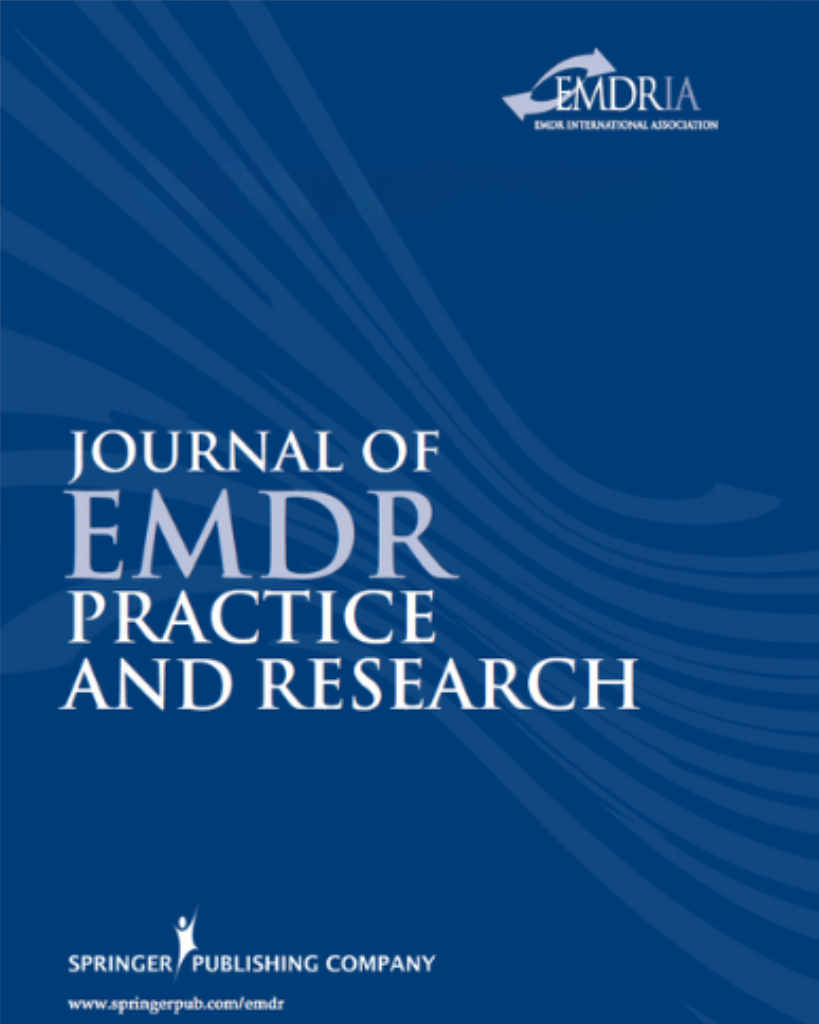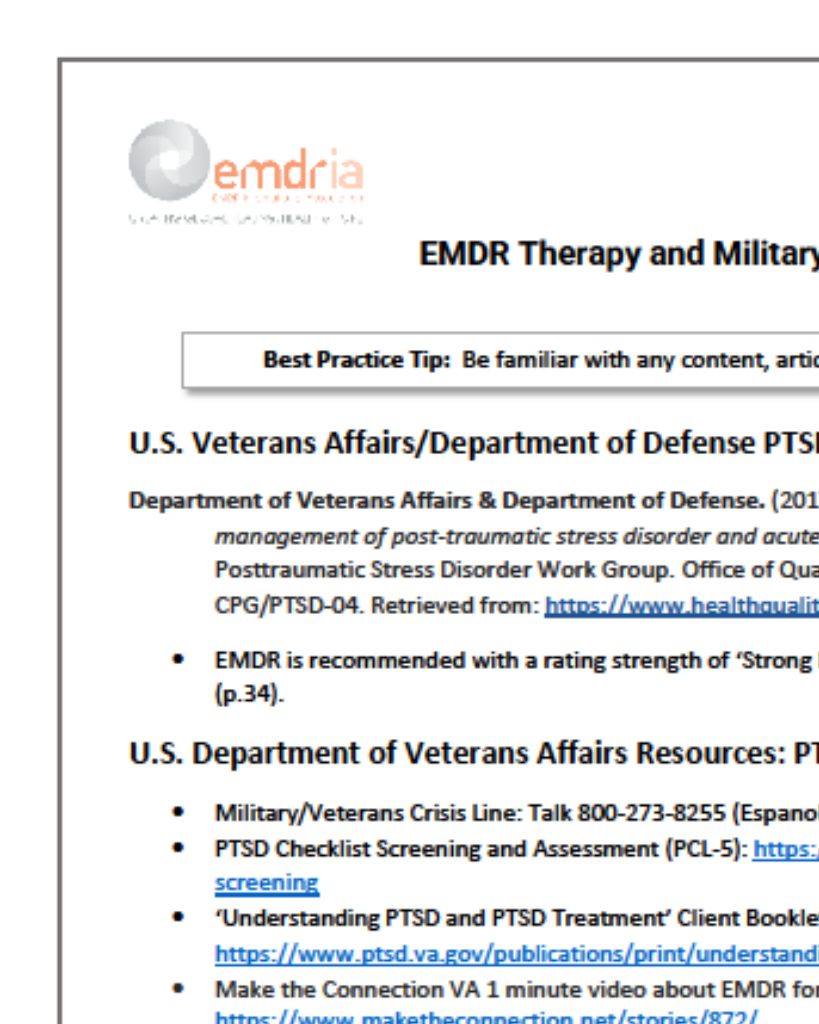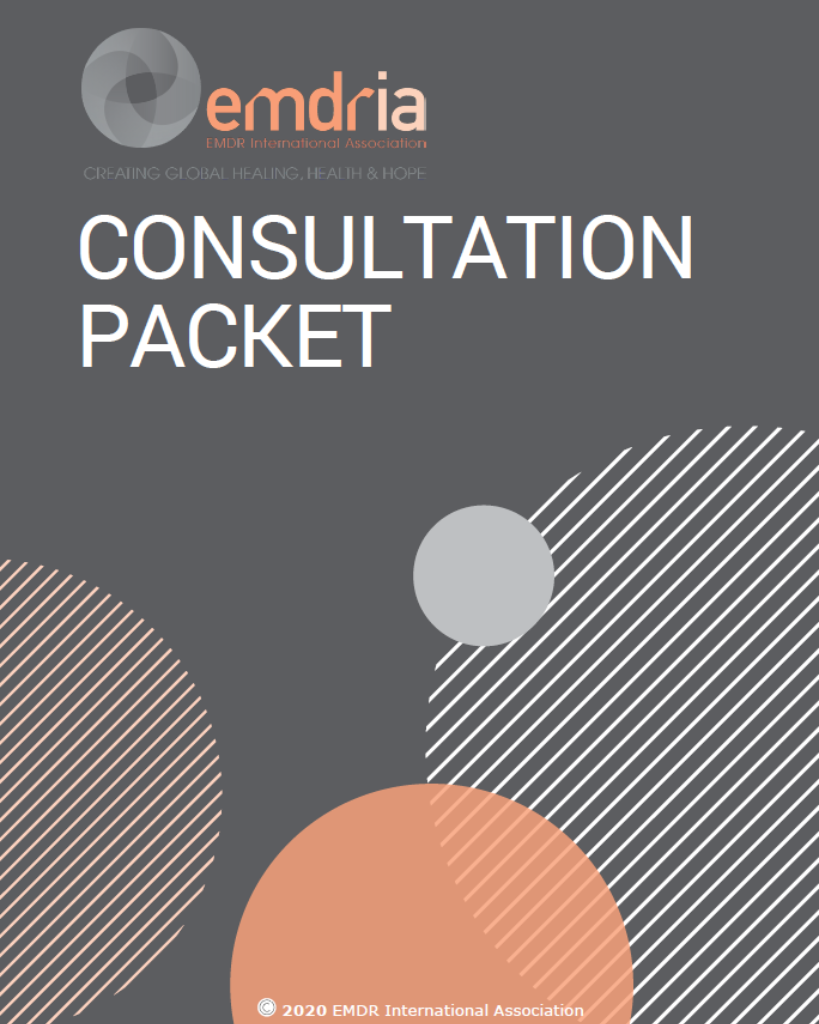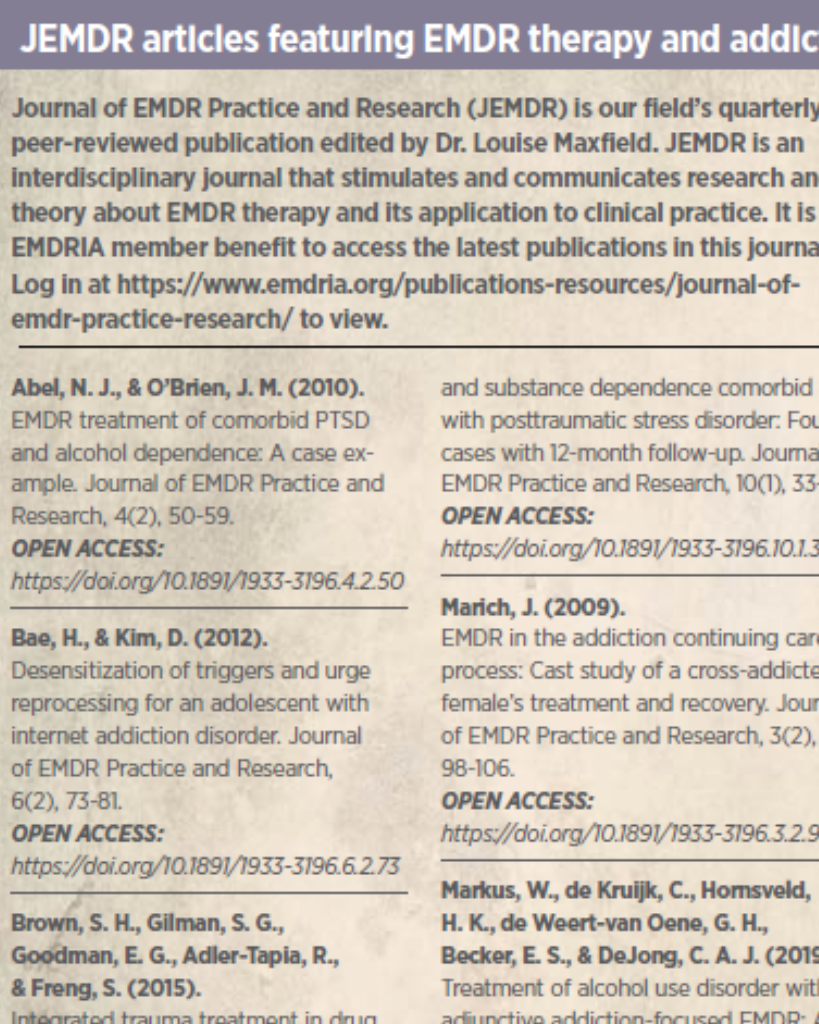EMDR Therapy Reduces Intense Treatment-Resistant Cravings in a Case of Gamma-Hydroxybutyric Acid Addiction
This article presents the first experiences of using EMDR therapy to aid in the treatment of gamma-hydroxybutyric acid (GHB) dependency.
Article Abstract
“This article presents the first experiences of using eye movement desensitization and reprocessing (EMDR) therapy to aid in the treatment of gamma-hydroxybutyric acid (GHB) dependency. A case presented itself as a result of intense, treatment-resistant cravings despite pharmacological treatment. The patient received 7 weekly sessions using a subset of the palette of EMDR interventions in addiction (PEIA; Markus & Hornsveld, 2017) targeting both negative and positive valenced addiction-related memory representations from the past, present, and future. Patient-reported GHB craving showed a gradual and prolonged reduction. Urine samples showed that the patient remained abstinent during and at least 6 months after EMDR therapy. Further research regarding the effectiveness of EMDR therapy in this particularly challenging group of substance users is warranted.”
—Description from publisher
Article Access
Open Access
Qurishi, R., Markus, W., Habra, M. M. J., Bressers, B., & De Jong, C. A. J. (2017). EMDR Therapy Reduces Intense Treatment-Resistant Cravings in a Case of Gamma-Hydroxybutyric Acid Addiction. Journal of EMDR Practice and Research, 11(1), 30–42. https://doi.org/10.1891/1933-3196.11.1.30
About the Journal
The Journal of EMDR Practice and Research is a peer-reviewed publication devoted to integrative, state-of-the-art papers about Eye Movement Desensitization and Reprocessing. It is a broadly conceived interdisciplinary journal that stimulates and communicates research and theory about EMDR, and their application to clinical practice. The Journal of EMDR Practice and Research is the Official Publication of the EMDR International Association.
Date
March 1, 2017
Creator(s)
Rouhollah Qurishi, Wiebren Markus, Maaike M. J. Habra
Contributor(s)
Bibi Bressers, Cornelis A. J. De Jong
Topics
Addictions
Extent
13 pages
Publisher
Springer Publishing Company
Rights
Copyright © 2017 EMDR International Association
APA Citation
Qurishi, R., Markus, W., Habra, M. M. J., Bressers, B., & De Jong, C. A. J. (2017). EMDR Therapy Reduces Intense Treatment-Resistant Cravings in a Case of Gamma-Hydroxybutyric Acid Addiction. Journal of EMDR Practice and Research, 11(1), 30–42. https://doi.org/10.1891/1933-3196.11.1.30
Series
11
Installment
1
Audience
EMDR Therapists
Language
English
Content Type
Peer-Reviewed
Original Source
Journal of EMDR Practice and Research
Access Type
Open Access





